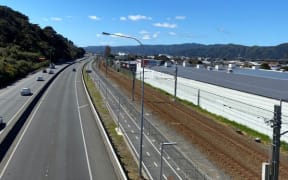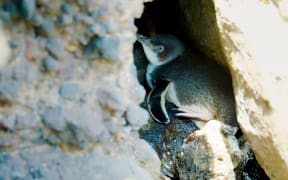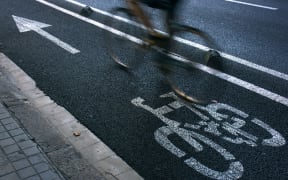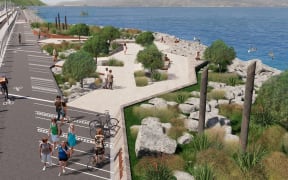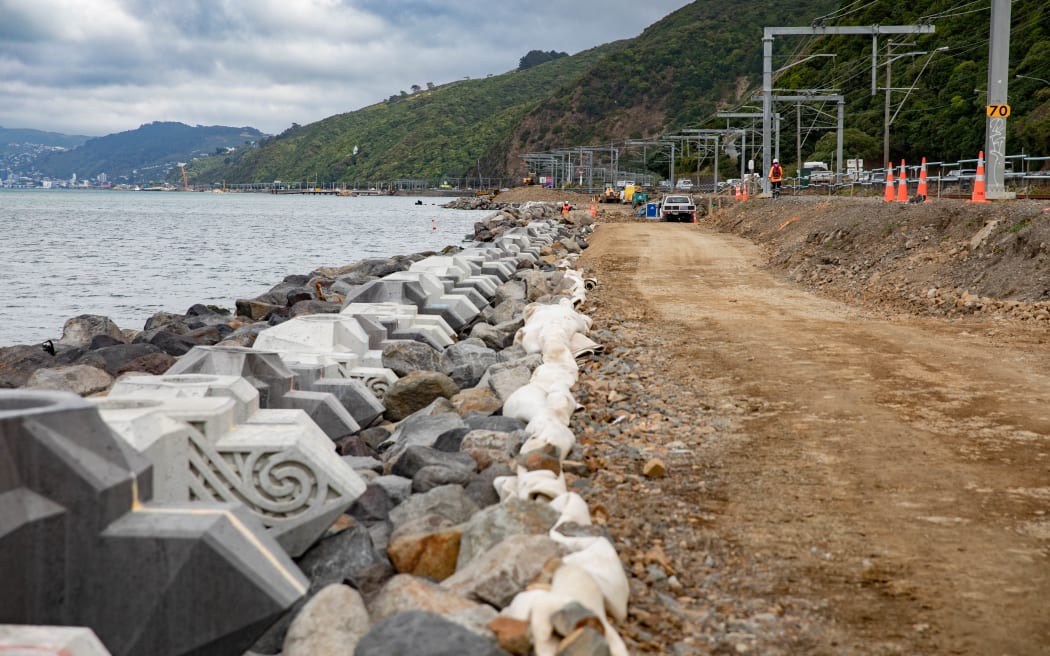
Rock is being sourced from Golden Bay and the Central North Island. Photo: RNZ / Angus Dreaver
Work is well underway on the Te Ara Tupua shared pathway which will link up Wellington and Lower Hutt. Check out photos of the work in progress by RNZ visual journalist Angus Dreaver.
The $311.9 million project is expected to be completed in 2026, and will provide a safe route for walking and cycling between the two cities, and a new resilient coastal edge protecting the road and rail.
It will link to the Petone to Melling walking and cycling path that opened in October last year, as well as other paths that will be built as part of Te Wai Takamori o Te Awa Kairangi (formerly known as RiverLink).
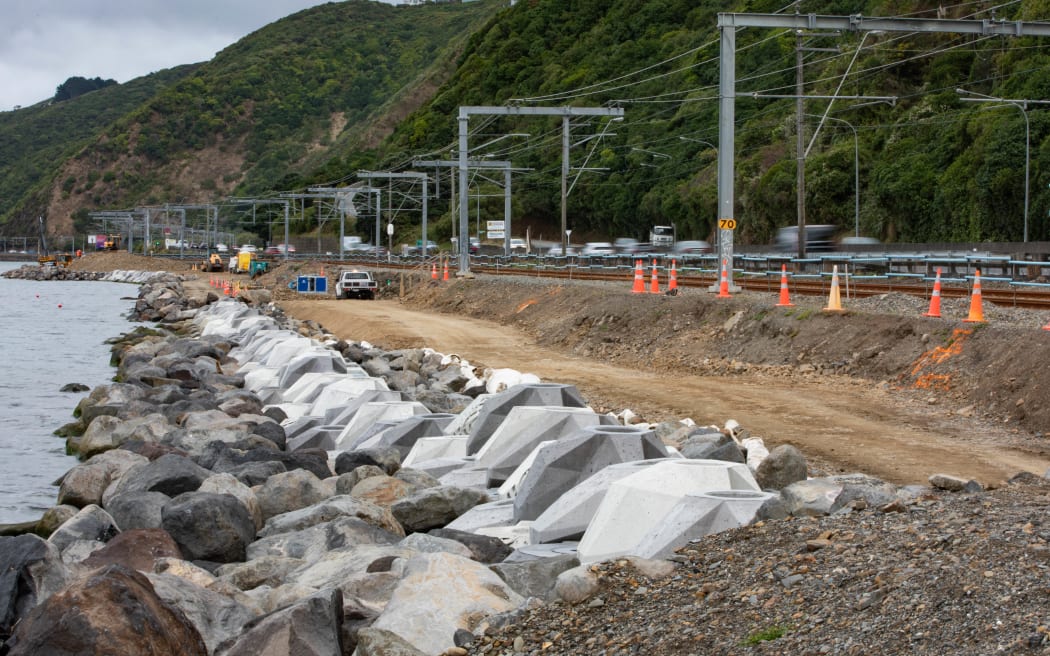
Photo: RNZ / Angus Dreaver
The Ngā Ūranga ki Pito-One (Ngauranga to Petone) section of Te Ara Tupua will be built on the harbour's edge from Ngauranga Interchange to Honiana Te Puni Reserve in Petone and connect with the new Pito-One to Melling section.
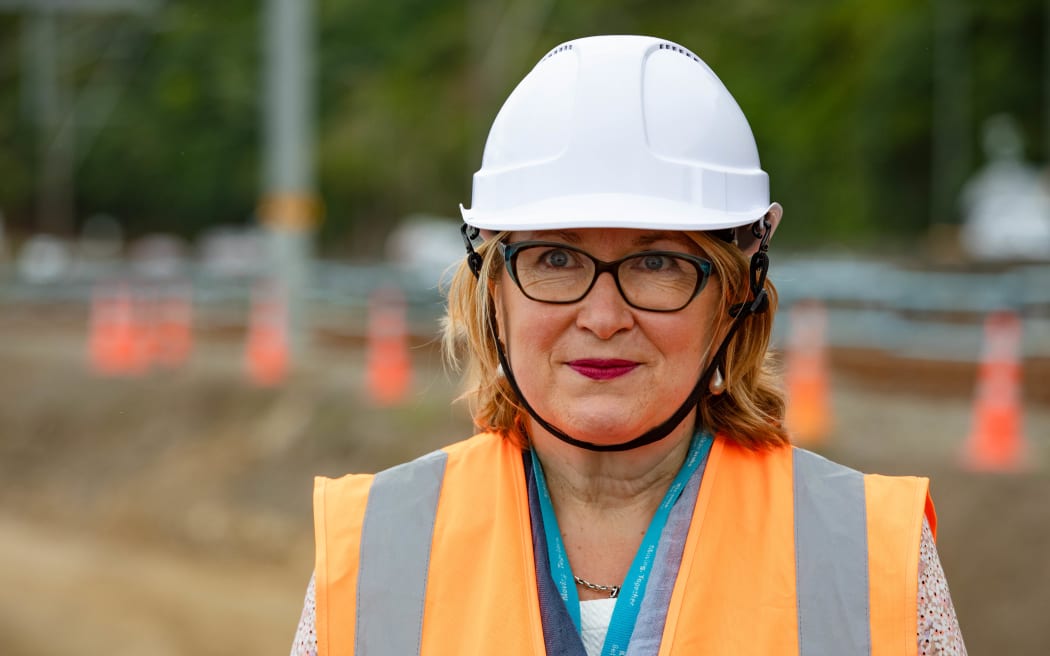
Emma Speight, director of regional relationships at NZTA, at the site. Photo: RNZ / Angus Dreaver
It is being delivered by Waka Kotahi which is working with other partners: Taranaki Whānui ki te Upoko o te Ika and Ngāti Toa Rangatira as iwi mana whenua, KiwiRail, Hutt City Council, Greater Wellington Regional Council, and Wellington City Council.
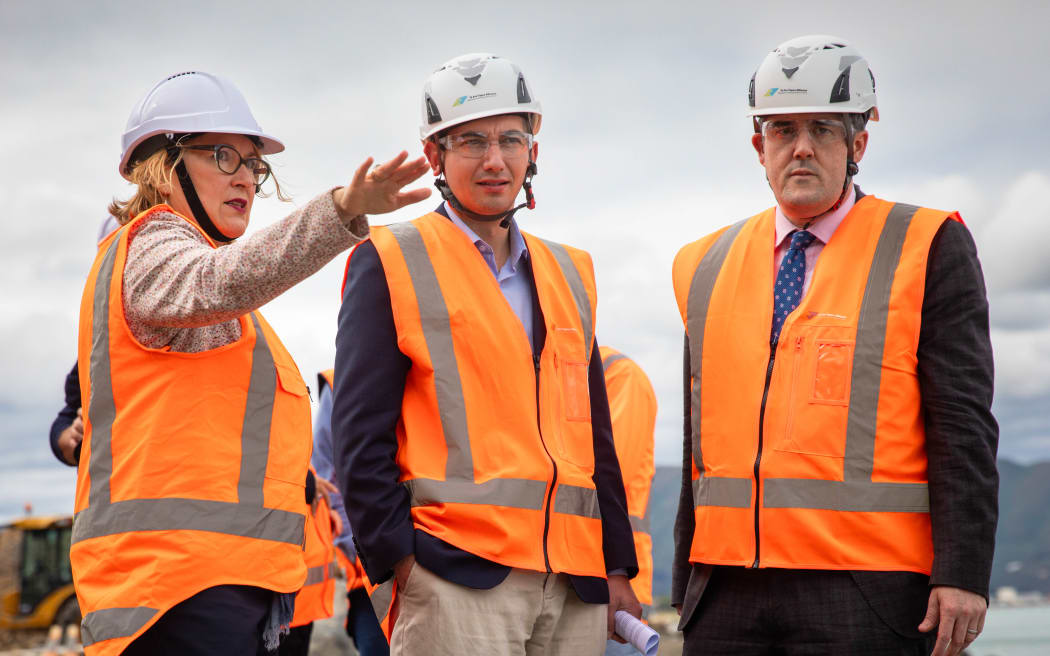
Emma Speight talks about the project to Ministers Simeon Brown and Chris Bishop. Photo: RNZ / Angus Dreaver
The name Te Ara Tupua was gifted to the project by Kura Moeahu (Te Āti Awa) which refers to the two tupua Ngake and Whātaitai who according to the traditional narrative created Te Whanganui-a-Tara (Wellington Harbour).
Iwi artist Len Hetet has designed cultural expression of features for the project, including cultural etchings on the bridge piers to reflect the history of the land and people.
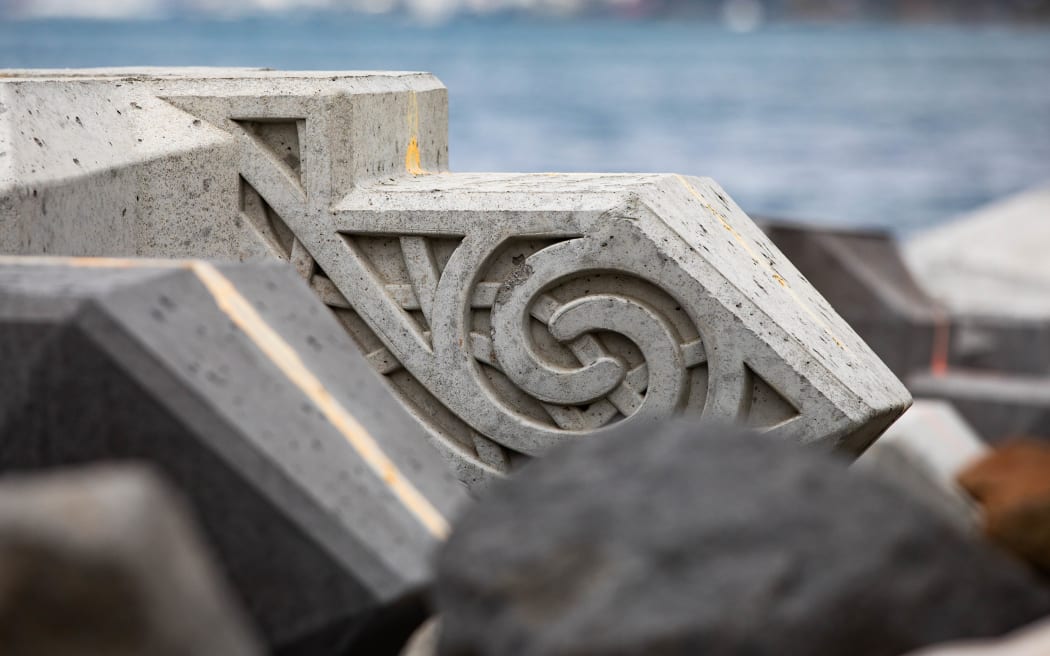
Photo: RNZ / Angus Dreaver
The shared path and the new coastal edge are being constructed from the north and south, and a temporary wharf is midway along the project at Karanga Point.
The coastal edge includes some vertical seawalls and revetments - sloping armoured banks - some made of concrete armour units, and some made of natural rock quarried in Golden Bay.
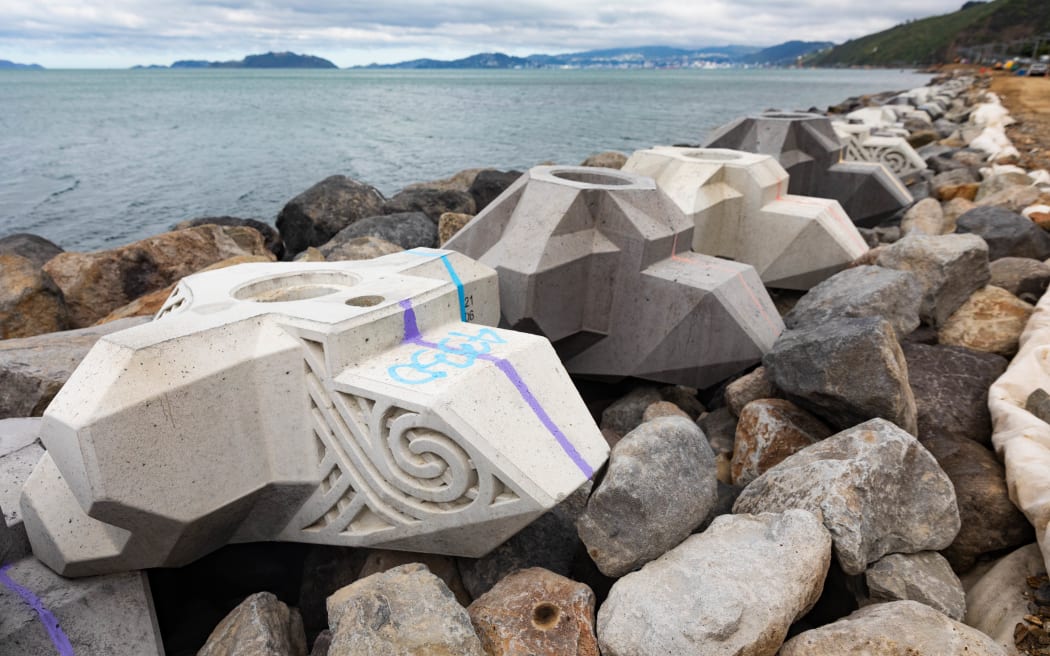
Photo: RNZ / Angus Dreaver
Waka Kotahi estimates 144,000 tonnes of rock will be needed to complete the project. The rock is being sourced from Golden Bay and the Central North Island. Six thousand eight hundred xblocs - made in Otaki - will also be used. Each xbloc weighs 2.6 tonnes.
There will also be up to 2700m3 of concrete seawall poured.
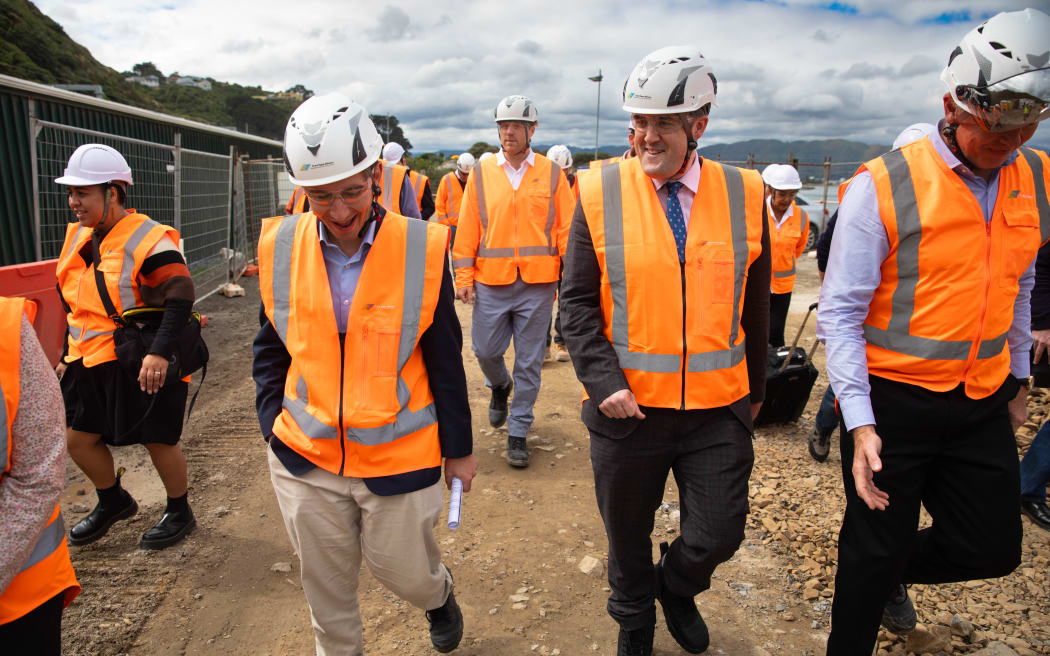
The minister and officials head off for a walk around the site. Photo: RNZ / Angus Dreaver
